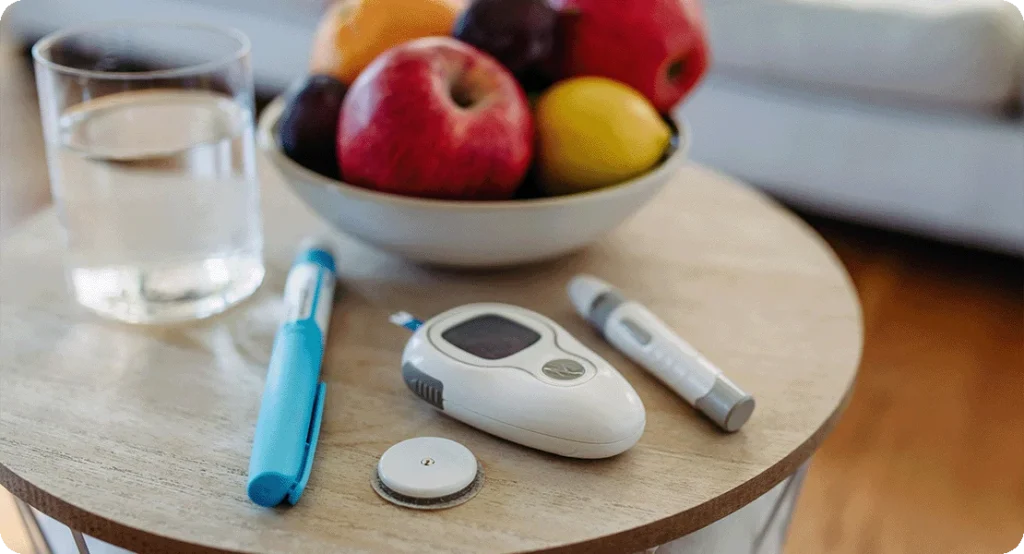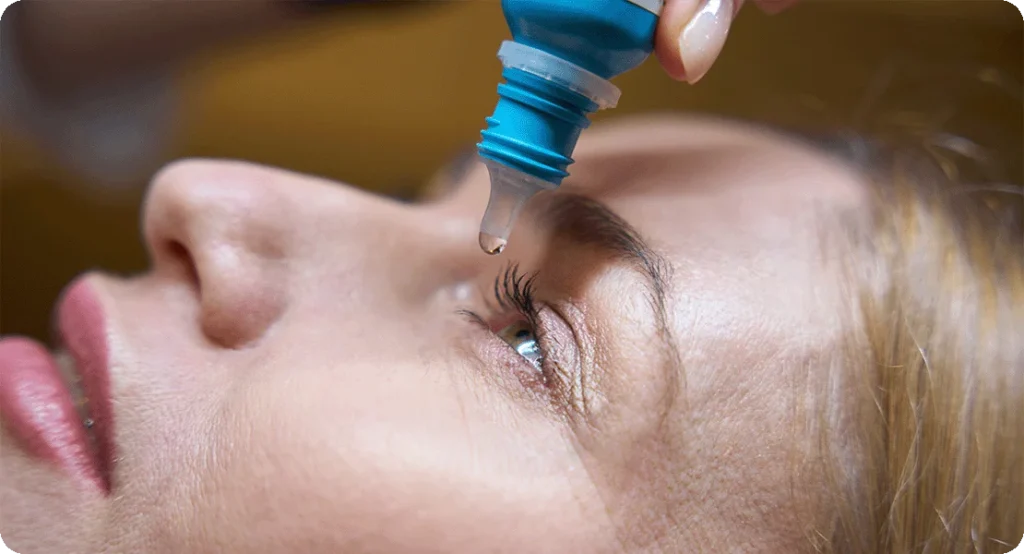Cataracts and dry eye syndrome are two common eye conditions, particularly in older adults. While they may seem unrelated, there is a significant connection between them. Understanding this relationship is crucial, especially for those undergoing cataract surgery or managing long-term eye health. This article explores the link between cataracts and dry eyes, their causes, symptoms, and how to manage both conditions effectively.
Understanding Cataracts
Cataracts occur when the eye’s natural lens becomes cloudy, leading to blurred or reduced vision. This condition typically develops with age as proteins in the lens break down and clump together. Other factors that contribute to cataract formation include prolonged exposure to ultraviolet (UV) rays, smoking, diabetes, and certain medications such as corticosteroids.
Understanding Dry Eye Syndrome
Dry eye syndrome, also known as keratoconjunctivitis sicca, is a prevalent condition that affects millions of people worldwide. It occurs when the eyes fail to produce a sufficient quantity or quality of tears to maintain proper lubrication and comfort. Tears play a crucial role in nourishing and protecting the eye surface, and any disruption in their production or composition can lead to discomfort and potential complications.

Causes of Dry Eye Syndrome
Several factors contribute to the development of dry eye syndrome, and understanding them can help in effective management and prevention:
- Ageing: Tear production naturally declines with age, making older individuals more susceptible to dry eye symptoms. This is particularly common in people over 50, as the lacrimal glands become less efficient.
- Hormonal Changes: Women are more prone to dry eyes due to hormonal fluctuations, especially during pregnancy, menopause, or while taking oral contraceptives.
- Environmental Conditions: Exposure to dry or windy climates, air conditioning, heating, and excessive screen time can accelerate tear evaporation, leading to dryness and irritation.
- Extended Screen Use: Staring at digital screens for prolonged periods reduces blinking rates, which in turn decreases tear distribution across the eye’s surface, exacerbating dryness.
- Autoimmune Disorders: Conditions such as Sjögren’s syndrome, rheumatoid arthritis, and lupus can impair tear gland function, leading to chronic dry eye syndrome.
- Medications: Certain medications, including antihistamines, decongestants, antidepressants, and beta-blockers, can interfere with tear production, contributing to dryness.
- Contact Lens Use: Long-term contact lens wear can disrupt the tear film, leading to discomfort and irritation.
- Eye Surgery: Procedures such as LASIK and cataract surgery can temporarily or permanently affect tear production by altering corneal nerve sensitivity.
- Deficiency in Essential Nutrients: A lack of omega-3 fatty acids, vitamin A, and other essential nutrients can compromise tear production and quality.
Symptoms of Dry Eye Syndrome
The symptoms of dry eye syndrome can range from mild irritation to severe discomfort, affecting daily activities and overall quality of life. Common symptoms include:
- A persistent dry, scratchy, or burning sensation in the eyes
- Redness and inflammation
- Sensitivity to light (photophobia)
- A feeling of grittiness, as if there is sand in the eyes
- Blurred vision that improves with blinking
- Watery eyes due to the eye’s attempt to compensate for dryness
- Difficulty wearing contact lenses
- Eye fatigue, especially after prolonged reading or screen use

Complications of Untreated Dry Eyes
If left untreated, dry eye syndrome can lead to more serious complications, including:
- Increased Risk of Eye Infections: Tears play a protective role by washing away debris and bacteria. Insufficient tear production can increase the likelihood of infections.
- Damage to the Corneal Surface: Chronic dryness can cause corneal abrasions, inflammation (keratitis), or even corneal ulcers in severe cases.
- Impaired Vision: Blurred vision and difficulty focusing can result from tear film instability, affecting activities such as reading and driving.
The Connection Between Cataracts and Dry Eyes
Cataracts and dry eye syndrome are distinct eye conditions, yet they frequently occur together, particularly in ageing individuals. This overlap is not coincidental, as both conditions share common risk factors and physiological changes that affect eye health. Understanding this connection is crucial for those managing either condition, as well as for individuals undergoing cataract surgery, which can sometimes worsen dry eye symptoms.
1. Ageing and Common Risk Factors
Ageing plays a significant role in the development of both cataracts and dry eye syndrome, making their coexistence common among older adults. As the body ages, various biological changes occur that increase the risk of both conditions:
- Decline in Tear Production: The lacrimal glands, responsible for tear secretion, become less efficient with age, leading to a reduction in tear volume and quality. This makes the eyes more prone to dryness, irritation, and inflammation.
- Lens Protein Breakdown: Over time, proteins within the eye’s lens begin to break down and clump together, resulting in cataracts. The oxidative stress that contributes to cataract formation can also damage other parts of the eye, potentially affecting tear production and stability.
- Hormonal Changes: Hormonal fluctuations, particularly in postmenopausal women, can contribute to both conditions. Lower oestrogen and androgen levels have been linked to decreased tear production and a higher likelihood of cataract development.
- Chronic Inflammation: Low-grade inflammation is common in ageing tissues, including the eyes. This can lead to dysfunction in the meibomian glands, which produce the oily layer of tears that prevents tear evaporation, worsening dry eye symptoms.
- Reduced Blink Reflex: With age, people tend to blink less frequently, especially when reading or using digital devices. This reduced blink rate can lead to faster tear evaporation and exacerbate dry eye symptoms.
Together, these age-related changes create an environment where cataracts and dry eyes often appear simultaneously, compounding discomfort and visual impairment.
2. Cataract Surgery and Dry Eyes
Cataract surgery is the most effective treatment for restoring clear vision, but it can also have temporary or long-term effects on tear production and ocular surface health. Several factors contribute to the link between cataract surgery and dry eyes:

Surgical Impact on the Corneal Nerves
During cataract surgery, a small incision is made in the cornea to remove the clouded lens and replace it with an artificial intraocular lens (IOL). While the incision is small, it can disrupt the delicate network of corneal nerves responsible for regulating tear production. As a result:
- The eye produces fewer tears immediately after surgery, leading to dryness and irritation.
- The cornea may become less sensitive, delaying the brain’s signals to replenish the tear film.
- Recovery of nerve function can take weeks to months, during which dry eye symptoms may persist.
Inflammatory Response and Tear Film Disruption
Even though cataract surgery is minimally invasive, it triggers a mild inflammatory response in the eye. This inflammation can:
- Affect the balance of the tear film, leading to increased tear evaporation.
- Aggravate pre-existing dry eye conditions, making symptoms more noticeable post-surgery.
- Temporarily impair the function of the meibomian glands, reducing the production of the essential oily layer that keeps tears from evaporating too quickly.
Medication-Induced Dryness
Post-operative care typically includes a regimen of medicated eye drops to prevent infection and reduce inflammation. However, some of these medications can contribute to dry eye symptoms:
- Steroid eye drops reduce inflammation but may also impact the production of natural tear components.
- Preservatives in eye drops can cause irritation and exacerbate dry eye symptoms, especially in individuals with sensitive eyes.
- Antibiotic drops can sometimes cause temporary discomfort and tear film instability.
Changes in Blinking Patterns and Tear Evaporation
Post-surgery, some patients experience a temporary alteration in blinking patterns due to:
- Increased awareness of their eyes, causing them to blink less frequently.
- Mild corneal swelling, which can interfere with the natural eyelid movement.
- Reduced blink completeness, where the eyelids do not fully close, leading to greater tear evaporation.
These blinking changes can disrupt tear distribution and result in persistent dryness, particularly in the weeks following the procedure.
Pre-existing Dry Eye Syndrome and Surgery Risks
Patients who already have dry eye syndrome before cataract surgery are at greater risk of developing more severe symptoms afterward. For this reason, eye specialists often recommend treating dry eyes before surgery through:
- Intensive lubrication with preservative-free artificial tears.
- Omega-3 supplements to support tear production.
- Meibomian gland treatments, such as warm compresses or prescription medications, to enhance the quality of the tear film.
By addressing dry eye symptoms before undergoing cataract surgery, patients can improve surgical outcomes and reduce post-operative discomfort.
3. Shared Risk Factors and Causes
Cataracts and dry eye syndrome may seem like separate eye conditions, but they share several underlying risk factors that can contribute to their development simultaneously. Many of these factors stem from systemic health conditions, environmental influences, and lifestyle choices that affect both the eye’s lens and the tear film. Recognising these shared risks can help individuals take preventive steps to maintain better eye health and reduce the likelihood of experiencing both conditions.
A. Diabetes and Its Impact on Cataracts and Dry Eyes
Diabetes is a well-documented risk factor for both cataracts and dry eye syndrome due to the effects of high blood sugar levels on the eyes. Individuals with diabetes are at a significantly higher risk of developing both conditions earlier in life compared to those without the disease.
How Diabetes Contributes to Cataracts
- High glucose levels in the blood lead to oxidative stress, which damages lens proteins and accelerates cataract formation.
- Excess glucose can be converted into sorbitol, a sugar alcohol that accumulates in the lens, causing it to swell and become cloudy.
- Diabetic individuals are more likely to develop posterior subcapsular cataracts, which progress rapidly and significantly affect vision.

How Diabetes Contributes to Dry Eyes
- Diabetes can damage the nerves responsible for lacrimal gland function, leading to reduced tear production.
- The disease affects the meibomian glands, which produce the oily layer of the tear film, resulting in faster tear evaporation.
- Diabetic neuropathy may reduce corneal sensitivity, leading to decreased blinking and worsening dryness.
Regular eye exams and good blood sugar control are essential in preventing or slowing down the progression of both conditions.
B. UV Exposure and Its Role in Cataract Formation and Tear Film Instability
Exposure to ultraviolet (UV) radiation from sunlight is another significant risk factor that contributes to both cataracts and dry eye syndrome. Over time, prolonged UV exposure can cause cumulative damage to the eyes, leading to structural and functional changes.
Effects of UV Radiation on Cataracts
- UV rays accelerate the formation of free radicals, which damage the proteins in the lens, causing them to clump together.
- The eye’s natural lens absorbs UV light, leading to photo-oxidative damage and loss of transparency.
- UV exposure is linked to cortical cataracts, which develop on the edges of the lens and gradually impair vision.
Effects of UV Radiation on Dry Eye Syndrome
- UV rays can cause damage to the ocular surface, leading to inflammation and a weakened tear film.
- Long hours in bright sunlight can increase tear evaporation, worsening dryness and irritation.
- UV radiation may contribute to pterygium, a growth on the eye’s surface that can cause discomfort and interfere with tear distribution.
Wearing UV-protective sunglasses and wide-brimmed hats can help reduce the harmful effects of sun exposure on eye health.
C. Medications That Can Contribute to Cataracts and Dry Eyes
Certain commonly used medications can have side effects that increase the risk of both cataracts and dry eye syndrome. Being aware of these effects can help individuals manage their eye health while taking necessary treatments for other conditions.
Medications That Increase Cataract Risk
- Corticosteroids – Long-term use of steroids (oral, inhaled, or in eye-drop form) is strongly associated with the development of posterior subcapsular cataracts.
- Antipsychotic medications – Some drugs, such as chlorpromazine, can cause changes in lens structure that promote cataract formation.
- Statins (cholesterol-lowering drugs) – Prolonged use has been linked to alterations in lens metabolism that may contribute to cataracts.

Medications That Can Worsen Dry Eye Syndrome
- Antihistamines – Often used for allergies, these medications can reduce tear production and worsen dryness.
- Beta-blockers – Commonly prescribed for heart conditions and high blood pressure, these drugs may decrease aqueous tear production.
- Hormone replacement therapy (HRT) – Some postmenopausal women on HRT experience changes in tear composition, leading to dryness.
- Decongestants and diuretics – These medications reduce overall bodily fluid retention, which can lead to decreased tear production.
For those who require these medications, using lubricating eye drops or discussing alternative options with a doctor may help alleviate symptoms.
D. Additional Lifestyle and Environmental Factors
Beyond diabetes, UV exposure, and medication use, other lifestyle and environmental factors can contribute to both cataracts and dry eye syndrome.
- Smoking – Tobacco smoke contains chemicals that promote oxidative stress, accelerating cataract formation. It also affects tear gland function, leading to increased tear evaporation and worsening dryness.
- Poor nutrition – A diet lacking in antioxidants, vitamin A, and omega-3 fatty acids can impair eye health, making the lens more susceptible to cataracts and reducing tear film stability.
- Prolonged screen use – Staring at screens for extended periods reduces blink frequency, leading to increased tear evaporation and digital eye strain.
- Chronic air exposure – Living in dry, windy, or polluted environments can accelerate tear evaporation, contributing to eye irritation and long-term lens damage.
Making lifestyle adjustments—such as quitting smoking, eating a nutrient-rich diet, wearing protective eyewear, and staying hydrated—can help lower the risk of both cataracts and dry eye syndrome while supporting overall eye health.
Managing Cataracts and Dry Eyes Together
Since dry eye symptoms can be aggravated by cataract surgery, proper management is essential before and after the procedure to ensure optimal healing and visual outcomes. Addressing dry eye syndrome proactively can improve surgical results, minimise post-operative discomfort, and enhance overall eye health.
Pre-Surgical Care
Managing dry eyes before undergoing cataract surgery is crucial, as a stable tear film contributes to better corneal clarity and more accurate intraocular lens (IOL) measurements. Addressing dry eyes in advance can also help prevent complications during the healing process.
Comprehensive Eye Assessment
- Before cataract surgery, an ophthalmologist may conduct tear film stability tests, such as the Schirmer test or tear break-up time test, to evaluate the severity of dry eye syndrome.
- Identifying underlying causes, such as meibomian gland dysfunction (MGD) or autoimmune disorders, allows for tailored treatment plans.
Optimising Tear Film Health
- Artificial tears and lubricating drops should be used regularly in the weeks leading up to surgery to ensure proper hydration of the ocular surface.
- If inflammation is contributing to dry eyes, doctors may prescribe medicated eye drops such as cyclosporine, lifitegrast, or mild steroid drops to reduce inflammation and promote tear production.
- Keeping the eyelids clean with warm compresses and gentle lid scrubs can help manage meibomian gland dysfunction, improving tear film stability.
- In cases of severe dry eye, an ophthalmologist may recommend punctal plugs to help retain natural tears.
Dietary and Lifestyle Modifications
- Increasing omega-3 intake through fatty fish, flaxseeds, walnuts, or supplements can enhance tear quality by improving the function of the meibomian glands.
- Staying hydrated by drinking sufficient water supports tear production and reduces eye dryness.
- Environmental adjustments, such as using a humidifier, avoiding direct airflow from fans and heaters, and limiting exposure to smoke and pollutants, can help prevent further irritation.
- Reducing screen time and following the 20-20-20 rule (looking away from screens every 20 minutes at an object 20 feet away for 20 seconds) can help prevent digital eye strain and tear evaporation.
Post-Surgical Care
After cataract surgery, the eyes go through a healing phase where inflammation, changes in tear production, and temporary corneal nerve disruption can lead to increased dryness. Proactive care can speed up recovery and improve comfort.
Use of Eye Drops
- Following the prescribed eye drop regimen is essential for reducing inflammation and maintaining moisture. This often includes anti-inflammatory drops to minimise swelling and irritation.
- Regular use of preservative-free artificial tears prevents excessive dryness and discomfort, especially in the first few weeks after surgery.
- If using over-the-counter eye drops, single-dose vials without preservatives are preferable to avoid additional irritation.

Enhancing Tear Retention and Corneal Healing
- Patients may blink less frequently due to post-surgical sensitivity, leading to faster tear evaporation. Making a conscious effort to blink more often can help distribute tears evenly.
- Keeping the eyelids clean and using gentle lid wipes can help if irritation occurs without causing excessive friction.
- In cases where dryness persists, punctal plugs may be inserted to help retain moisture by preventing excessive tear drainage.
Environmental and Lifestyle Adjustments for Recovery
- Avoiding exposure to wind, air conditioning, and strong airflow helps prevent excessive tear evaporation.
- Wearing sunglasses outdoors can shield the eyes from dust, wind, and UV rays, minimising irritation.
- Limiting screen time and adjusting screen brightness can help reduce eye strain and discomfort.
- Continuing omega-3 supplements and staying hydrated ensures ongoing tear film support during the healing phase.
By taking these proactive steps before and after cataract surgery, patients can significantly reduce the risk of dry eye complications, improve healing, and achieve better visual outcomes.
Conclusion
Cataracts and dry eye syndrome frequently occur together, often due to ageing and overlapping risk factors. While cataract surgery is an effective treatment for vision improvement, it can temporarily worsen dry eye symptoms. Proper pre- and post-operative care can help manage these symptoms, ensuring optimal eye health and recovery. If you experience symptoms of either condition, seeking timely medical advice from an eye care professional can help preserve vision and maintain comfort.

